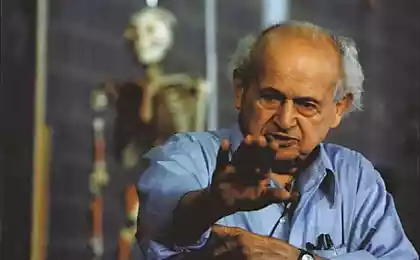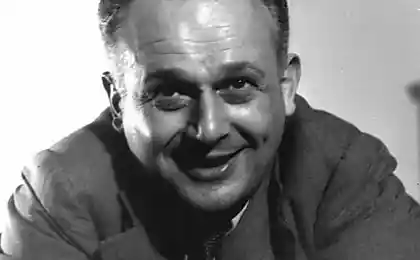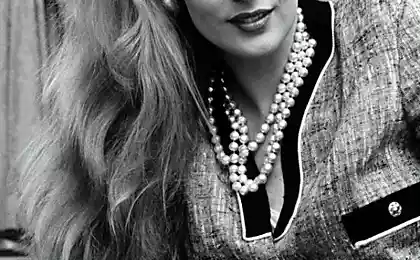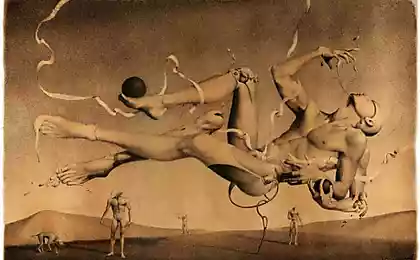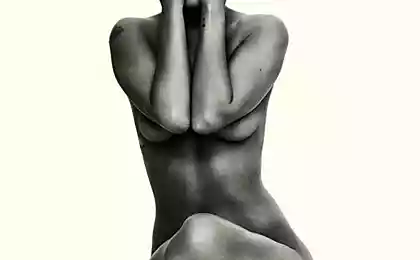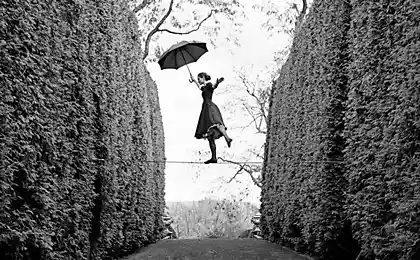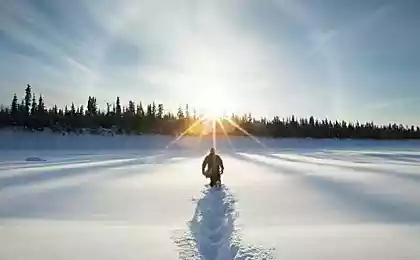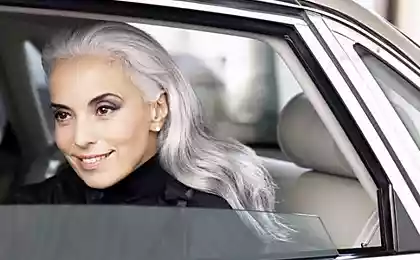857
The image of his own body: test Feldenkrais
The question "Who am I?" is a key issue in psychology. This is a basic, fundamental existential question in a person's life. All other questions follow: "Why am I?" "Where am I?", etc. If the answer to the question "Who am I?" all other issues will automatically receive the following from this answers. But this answer can only give the man himself, it is useless to look for answers outside. You need to take responsibility for themselves, for their lives, and not to shift it, considering himself a "victim of circumstances", "coincidences", etc. the answer to the question "Who am I?" implies taking responsibility, and responsibility is always intimidating. But that responsibility is a main characteristic of psychological maturity, an indicator of psychological maturity.

An important component of self-identity is the image of the body. We each have 2 ideas about your body: conscious and unconscious.
The conscious view of their body more close to reality. In mentally intact person it is fairly consistent with reality. One of the characteristics of disease – violation of testing reality, that is, its adequate perception. So, anorexia a borderline personality, and the conscious image of the body from the sun is far from the real the body: with the obvious shortage of weight, she sees her body as a full. In the case of more serious disorders, especially delirium, for their body can experience any fantasy...
The unconscious representation of the body may differ from reality even mentally intact adult. M. Feldenkrais call average distortion of the unconscious image of the body (distinct from the body real): 20-25%. Subsequent studies confirmed this figure.
As the advantages of working with body-image. Feldenkrais calls the next. First, the body is revealed to us objectively, we have a criterion with which we can compare the subjective perceptions of the client: a constant point of reference. Second, the field of psychological satabayeva more, less accessible: their emotional experiences and early childhood memories, the client will not admit as readily as to the study of body image. To change your life, change the way of action, and for this we need to change the image itself. And it is easier to start with only the image of their body. While the image of his own body is distorted, the person may not have a realistic view of themselves as a whole, including the psychological qualities.
The unconscious image of the body reflects the structure of nature (sometimes it is also called "psycho"). According to M. Feldenkrais, "We live and act in accordance with the way I am." That is manifest in the world and build our lives based on beliefs about ourselves. Same – "Who am I?" we were talking about in the beginning. You can bring a lot of aphorisms on this subject, including "a man's Character is his fate".
The body is a substrate for the psyche. Our understanding of your body – the Foundation for psychological understanding. Developmentally, first as a basic construct of functioning, formed the body schema: a representation of the location of his body in space, the ability to monitor, manage,... Then expanded to the image of the body – how the body looks at it what it is...
Our basic character structure, the basic features of the unconscious body image are formed at preschool age to 7 years. Further, they may change drastically at puberty (adolescence, 12 to 16 years). After 18 years rarely undergo drastic changes.
The unconscious image of their own body. The way I bodily, or unconscious image of the body is one of the deep and underlying structures of personality, influencing the entire personality in General and the movement on the path of life. It is possible to read information about the features of the structure of nature, topical issues, muscle and carapace injuries of development.
On a bodily form I, the possibility of its detection for the first time spoke M Feldenkrais, the founder of one of the schools TOP. He proposed a method of detecting bodily image through a simple and original methods: man with eyes closed shows the dimensions of the parts of his body, and his partner their measures. Based on this simple principle was the technique of determining bodily image I. the method provides key measurements to create a schematic image of a human figure. After the measurement, they are transferred to the paper, where a scale of 10:1 creates a graphic image. The goal of the method is to determine the degree of conformity of the unconscious body image conscious, that is, to identify the amount of distortion of the bodily image I, and hence the degree of understanding of their bodies, of the adequacy of his feelings.
To appreciate original and highly informative technique for identifying the internal image I, the best thing to do is to implement it. In addition to the surprising results obtained, it will bring some element of novelty, when you can see yourself from an unexpected side.
The method Feldenkrais (the Image of his own body) 1. Need an assistant (even a child), ruler, measuring tape, calculator, table with pokazatelja and two sheets of A4.
2. One person — the subject is standing with eyes closed, arms extended in front of you and palms together. The assistant (second person) asked him, what size does one or the other part of the body. Let's say the left hand. The subject throws his hands to the sides for the distance that he took it (felt) as the length of the left hand. To move hands possible vertically and horizontally — you like to feel your body the subject. But there is one moment — if the sizes are shown in the vertical plane, ALL only in the vertical. If the horizontal matching, the rule is observed. The assistant measures the distance centimeter (tailor's) tape and places the result into the table. The subject brings back hands in front of you to the next question.
3. Important! This phrase is necessary to say each time, before specifying part that Gaugeable: "Show with your hands how you feel, what size is..."
4. When all the present measurements will be made and recorded, the subject can open his eyes, and the assistant takes measurements called body parts in the "natural" size, and also writes the results to a table. There is a caveat — when measuring volumetric values, for example, the width of the chest, measurement is the width, since if the measured silhouette in the photo. It is necessary to consider, as to avoid confusion of the measurement volume. If you will be measured the volume, there is distortion in the circuit.
Yeah, there's also a test on his own body image:
Measurable indicators
1. The height of the head
2. Head width (+width of the mouth)
3. Neck length (from angle of mandible to the shoulder)
4. The length of the left shoulder of the jugular fossa
5. Length of the right shoulder of the jugular fossa
6. Length from shoulder to left elbow
7. Length from the shoulder to the elbow of the right hand
8. The width of the elbow joint of the left hand (on the side protrusions of the joint)
9. The width of the elbow joint of the right hand (on the side protrusions of the joint)
10. Length of the left forearm from the elbow to the wrist
11. Length of the right forearm from the elbow to the wrist
12. Length of the left hand
13. Length of the right hand
14. The length of the body from the jugular fossa to the umbilicus
15. Length from belly button to groin
16. Chest width
17. Waist width
18. The width of the pelvis
19. Length of the left leg from groin to knee
20. Length of the right leg from groin to knee
21. The width of the left leg in the knee joint
22. The width of the right leg at the knee joint
23. Length of the left leg from the knee to the bones of the foot
24. Length of the right leg from the knee to the bones of the foot
25. Length of left foot
26. Length of the right foot
The received data is transferred on the paper in scale of 10:1, the result is a schematic representation of a human figure, reflecting the unconscious image of the body, (it for convenience of drawing it is better to divide a vertical line in the center and from it symmetrically to postpone the sizes). Then, on another piece of paper draw a diagram of the body according to these dimensions, also in a ratio of 10:1. It is necessary to compare the real image to how the image is represented internally. And, already having the visual diagram, you can proceed to the analysis of the obtained results. Remember that the unconscious body image may differ significantly from the actual body. And the image data represent exactly the unconscious image of the body, not the body real.
Quantitative and qualitative analysis techniques. In the quantitative analysis calculated the percentage distortion for each of the parameters (marked the problem area) and the average rate (the distortion of the unconscious image of the body as a whole). Of course, this requires not only body image but body real: they are measured in the normal range. On the calculator, calculate the percent deviation of each pokazatelja from the real values (no matter in what direction). Then add up all the deviations and get the totals of distortion. Remember her and the figure, repeat the test in a month and you will get the real figure to improve the image of his own body. + it is possible to calculate the percentage differences of right and left measurements and to obtain the coefficient of asymmetry of the unconscious body image.
Ladonna test (map of the palm) Is the abbreviated Express. To do this, you only need a ruler to do yourself. One hand crank per spin, and the fingers of the other showing the size of individual fingers, phalanges, width and height of the palm, comparing present sizes lying on the table with a ruler. Then measure the actual size and so on. Scientists from University College London found that body image in the brain is largely distorted, and may be two-thirds wider than it actually is.
In the experiment, the researchers created a "map" of the palm volunteers, comparing the real size of their hands so the hand is perceived by the brain. It turned out that, for example, the distance between the thumb and index finger of the brains of participants receives 69 percent more than it actually is. And the fingers seem to be volunteers 27.9 percent shorter.
Scientists believe that the distortion is due to the large number of sensory signals entering the brain from different areas of the skin. A "curved" model of the body, according to the authors of the study can be extrapolated to the rest of the body, especially those that have high tactile sensitivity.
Researchers believe that this effect is more pronounced in women because they tend to be more receptive to the peculiarities of their appearance. Women usually perceive the dimensions of the abdomen and thighs too exaggerated. Scientists suggest that the results of their research helps to explain why so many slim women when you look in the mirror find themselves overweight, but actually have a deficiency and the cause of the development of some eating disorders.
Analysis. You can perform yourself. Careful analysis of body image and the real unconscious will give you food for thought. But even better to do it at the bodily-orientirovannogo therapist or experienced psychologist.published Author Andrey Blueskin
And remember, only by changing their consumption — together we change the world! ©
Join us in Facebook , Vkontakte, Odnoklassniki
Source: www.beloveshkin.com/2015/09/obraz-sobstvennogo-tela-test-feldenkrajza.html

An important component of self-identity is the image of the body. We each have 2 ideas about your body: conscious and unconscious.
The conscious view of their body more close to reality. In mentally intact person it is fairly consistent with reality. One of the characteristics of disease – violation of testing reality, that is, its adequate perception. So, anorexia a borderline personality, and the conscious image of the body from the sun is far from the real the body: with the obvious shortage of weight, she sees her body as a full. In the case of more serious disorders, especially delirium, for their body can experience any fantasy...
The unconscious representation of the body may differ from reality even mentally intact adult. M. Feldenkrais call average distortion of the unconscious image of the body (distinct from the body real): 20-25%. Subsequent studies confirmed this figure.
As the advantages of working with body-image. Feldenkrais calls the next. First, the body is revealed to us objectively, we have a criterion with which we can compare the subjective perceptions of the client: a constant point of reference. Second, the field of psychological satabayeva more, less accessible: their emotional experiences and early childhood memories, the client will not admit as readily as to the study of body image. To change your life, change the way of action, and for this we need to change the image itself. And it is easier to start with only the image of their body. While the image of his own body is distorted, the person may not have a realistic view of themselves as a whole, including the psychological qualities.
The unconscious image of the body reflects the structure of nature (sometimes it is also called "psycho"). According to M. Feldenkrais, "We live and act in accordance with the way I am." That is manifest in the world and build our lives based on beliefs about ourselves. Same – "Who am I?" we were talking about in the beginning. You can bring a lot of aphorisms on this subject, including "a man's Character is his fate".
The body is a substrate for the psyche. Our understanding of your body – the Foundation for psychological understanding. Developmentally, first as a basic construct of functioning, formed the body schema: a representation of the location of his body in space, the ability to monitor, manage,... Then expanded to the image of the body – how the body looks at it what it is...
Our basic character structure, the basic features of the unconscious body image are formed at preschool age to 7 years. Further, they may change drastically at puberty (adolescence, 12 to 16 years). After 18 years rarely undergo drastic changes.
The unconscious image of their own body. The way I bodily, or unconscious image of the body is one of the deep and underlying structures of personality, influencing the entire personality in General and the movement on the path of life. It is possible to read information about the features of the structure of nature, topical issues, muscle and carapace injuries of development.
On a bodily form I, the possibility of its detection for the first time spoke M Feldenkrais, the founder of one of the schools TOP. He proposed a method of detecting bodily image through a simple and original methods: man with eyes closed shows the dimensions of the parts of his body, and his partner their measures. Based on this simple principle was the technique of determining bodily image I. the method provides key measurements to create a schematic image of a human figure. After the measurement, they are transferred to the paper, where a scale of 10:1 creates a graphic image. The goal of the method is to determine the degree of conformity of the unconscious body image conscious, that is, to identify the amount of distortion of the bodily image I, and hence the degree of understanding of their bodies, of the adequacy of his feelings.
To appreciate original and highly informative technique for identifying the internal image I, the best thing to do is to implement it. In addition to the surprising results obtained, it will bring some element of novelty, when you can see yourself from an unexpected side.
The method Feldenkrais (the Image of his own body) 1. Need an assistant (even a child), ruler, measuring tape, calculator, table with pokazatelja and two sheets of A4.
2. One person — the subject is standing with eyes closed, arms extended in front of you and palms together. The assistant (second person) asked him, what size does one or the other part of the body. Let's say the left hand. The subject throws his hands to the sides for the distance that he took it (felt) as the length of the left hand. To move hands possible vertically and horizontally — you like to feel your body the subject. But there is one moment — if the sizes are shown in the vertical plane, ALL only in the vertical. If the horizontal matching, the rule is observed. The assistant measures the distance centimeter (tailor's) tape and places the result into the table. The subject brings back hands in front of you to the next question.
3. Important! This phrase is necessary to say each time, before specifying part that Gaugeable: "Show with your hands how you feel, what size is..."
4. When all the present measurements will be made and recorded, the subject can open his eyes, and the assistant takes measurements called body parts in the "natural" size, and also writes the results to a table. There is a caveat — when measuring volumetric values, for example, the width of the chest, measurement is the width, since if the measured silhouette in the photo. It is necessary to consider, as to avoid confusion of the measurement volume. If you will be measured the volume, there is distortion in the circuit.
Yeah, there's also a test on his own body image:
Measurable indicators
1. The height of the head
2. Head width (+width of the mouth)
3. Neck length (from angle of mandible to the shoulder)
4. The length of the left shoulder of the jugular fossa
5. Length of the right shoulder of the jugular fossa
6. Length from shoulder to left elbow
7. Length from the shoulder to the elbow of the right hand
8. The width of the elbow joint of the left hand (on the side protrusions of the joint)
9. The width of the elbow joint of the right hand (on the side protrusions of the joint)
10. Length of the left forearm from the elbow to the wrist
11. Length of the right forearm from the elbow to the wrist
12. Length of the left hand
13. Length of the right hand
14. The length of the body from the jugular fossa to the umbilicus
15. Length from belly button to groin
16. Chest width
17. Waist width
18. The width of the pelvis
19. Length of the left leg from groin to knee
20. Length of the right leg from groin to knee
21. The width of the left leg in the knee joint
22. The width of the right leg at the knee joint
23. Length of the left leg from the knee to the bones of the foot
24. Length of the right leg from the knee to the bones of the foot
25. Length of left foot
26. Length of the right foot
The received data is transferred on the paper in scale of 10:1, the result is a schematic representation of a human figure, reflecting the unconscious image of the body, (it for convenience of drawing it is better to divide a vertical line in the center and from it symmetrically to postpone the sizes). Then, on another piece of paper draw a diagram of the body according to these dimensions, also in a ratio of 10:1. It is necessary to compare the real image to how the image is represented internally. And, already having the visual diagram, you can proceed to the analysis of the obtained results. Remember that the unconscious body image may differ significantly from the actual body. And the image data represent exactly the unconscious image of the body, not the body real.
Quantitative and qualitative analysis techniques. In the quantitative analysis calculated the percentage distortion for each of the parameters (marked the problem area) and the average rate (the distortion of the unconscious image of the body as a whole). Of course, this requires not only body image but body real: they are measured in the normal range. On the calculator, calculate the percent deviation of each pokazatelja from the real values (no matter in what direction). Then add up all the deviations and get the totals of distortion. Remember her and the figure, repeat the test in a month and you will get the real figure to improve the image of his own body. + it is possible to calculate the percentage differences of right and left measurements and to obtain the coefficient of asymmetry of the unconscious body image.
Ladonna test (map of the palm) Is the abbreviated Express. To do this, you only need a ruler to do yourself. One hand crank per spin, and the fingers of the other showing the size of individual fingers, phalanges, width and height of the palm, comparing present sizes lying on the table with a ruler. Then measure the actual size and so on. Scientists from University College London found that body image in the brain is largely distorted, and may be two-thirds wider than it actually is.
In the experiment, the researchers created a "map" of the palm volunteers, comparing the real size of their hands so the hand is perceived by the brain. It turned out that, for example, the distance between the thumb and index finger of the brains of participants receives 69 percent more than it actually is. And the fingers seem to be volunteers 27.9 percent shorter.
Scientists believe that the distortion is due to the large number of sensory signals entering the brain from different areas of the skin. A "curved" model of the body, according to the authors of the study can be extrapolated to the rest of the body, especially those that have high tactile sensitivity.
Researchers believe that this effect is more pronounced in women because they tend to be more receptive to the peculiarities of their appearance. Women usually perceive the dimensions of the abdomen and thighs too exaggerated. Scientists suggest that the results of their research helps to explain why so many slim women when you look in the mirror find themselves overweight, but actually have a deficiency and the cause of the development of some eating disorders.
Analysis. You can perform yourself. Careful analysis of body image and the real unconscious will give you food for thought. But even better to do it at the bodily-orientirovannogo therapist or experienced psychologist.published Author Andrey Blueskin
And remember, only by changing their consumption — together we change the world! ©
Join us in Facebook , Vkontakte, Odnoklassniki
Source: www.beloveshkin.com/2015/09/obraz-sobstvennogo-tela-test-feldenkrajza.html



